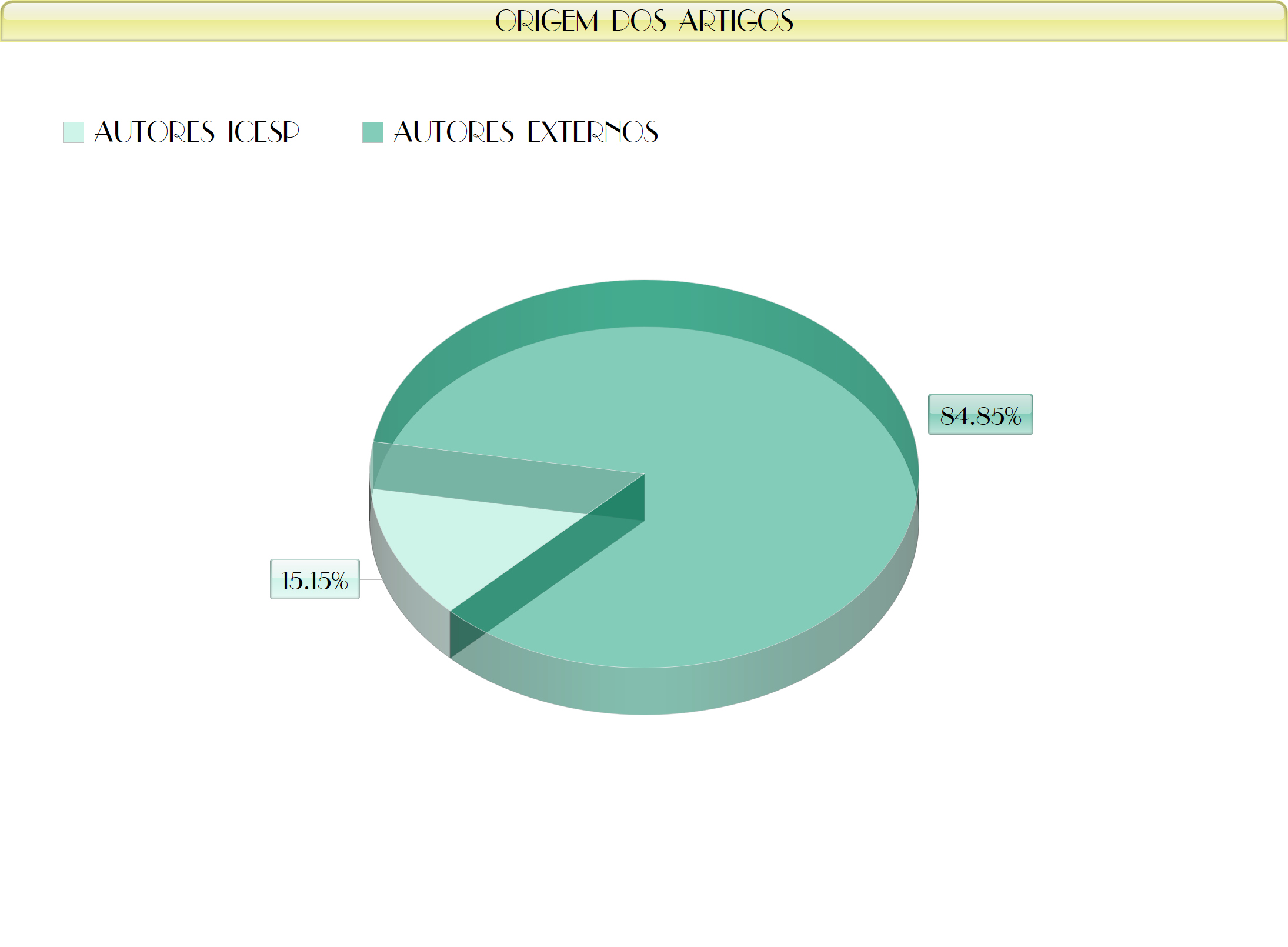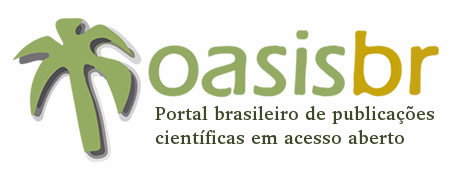DIFERENTES DOMÍNIOS DA ATIVIDADE FÍSICA E FATORES ASSOCIADOS EM ADOLESCENTES DO NORDESTE DO BRASIL
Resumo
RESUMO
Objetivo: analisar a associação dos domínios de Atividade Física no lazer, na escola e no deslocamento com fatores demográficos e socioeconômicos de Sergipe, Brasil. Método: o estudo trata-se de dois levantamentos epidemiológicos com delineamentos transversais, realizados em 2011 e 2016, com amostra representativa de escolares, composta por 8.143 adolescentes (2011=3992; 2016=4151), com idade entre 14 e 19 anos. O instrumento utilizado foi o Global School-based Student Health Survey (GSHS/WHO). Utilizou-se o teste qui-quadrado e regressão logística binária para a análise dos dados. Resultados: nos dois inquéritos, o Nível Insuficiente de Atividade Física (NIAF) no Lazer foi associado com os estudantes do sexo feminino (2011: OR=4,07; IC 95% 3,52-4,72 / 2016: OR=3,67; IC 95% 3,18-4,25) e do 3º Ano do Ensino Médio (2011: OR=1,34; IC 95% 1,10-1,66 / 2016: OR=1,32; IC 95% 1,08-1,62); com o NIAF Escolar, verificou-se associação com o sexo feminino (2011: OR=1,40; IC 95% 1,19-1,66 / 2016: OR=1,75; IC 95% 1,51-2,04), do turno noturno (2011: OR=1,63; IC 95% 1,39-1,92 / 2016: OR=1,47; IC 95% 1,25-1,73) e residentes da zona urbana (2011: OR=1,41; IC 95% 1,20-1,68 / 2016: OR=1,51; IC 95% 1,30-1,76); o NIAF de Deslocamento foi significativo para o turno noturno (2011: OR=1,25; IC 95% 1,06-1,48 / 2016: OR=1,29; IC 95% 1,07-1,57). Conclusão: foi evidenciada elevadas prevalências de NIAF entre 2011 e 2016 e associação em diferentes domínios.
ABSTRACT
Objective: to analyze an association between the domains of Physical Activity in leisure, school and commuting with demographic and socioeconomic factors in Sergipe, Brazil. Method: the study deals with two epidemiological surveys with cross-sectional designs, carried out in 2011 and 2016, with a representative sample of students, composed of 8143 adolescents (2011 = 3992; 2016 = 4151), aged between 14 and 19 years. The instrument used was the Global Student Health Survey in Schools (GSHS / WHO). The chi-square test and logistic regression were used for data analysis. Results: in the two Insufficient Level of Physical Activityniaf (ILPA) in Leisure surveys, it was associated with female students (2011: OR = 4.07; 95% CI 3.52-4.72 / 2016: OR = 3.67; 95% CI 3, 18- 4.25) and 3rd year of high school (2011: OR = 1.34; 95% CI 1.10-1.66 / 2016: OR = 1.32; 95% CI 1.08-1, 62); with the School NIAF there was an association with females (2011: OR = 1.40; 95% CI 1.19-1.66 / 2016: OR = 1.75; 95% CI 1.51-2.04) , night shift (2011: OR = 1.63; 95% CI 1.39-1.92 / 2016: OR = 1.47; 95% CI 1.25-1.73) and residents of the urban area (2011: OR = 1.41; 95% CI 1.20-1.68 / 2016: OR = 1.51; 95% CI 1.30-1.76); the Displacement ILPA was significant for the night shift (2011: OR = 1.25; 95% CI 1.06-1.48 / 2016: OR = 1.29; 95% CI 1.07-1.57). Conclusion: high rates of ILPA prevalence between 2011 and 2016 and association in different domains were evidenced.
Figshare DOI: 10.6084/m9.figshare.12838019
Palavras-chave
Referências
Abildsnes E, Rohde G, Berntsen S, Stea TH. Fun, influence and competence – a mixed methods study of prerequisites for high school students’ participation in physical education. BMC Public Health, 2017, 17:241.
Bengoechea EG; Juan, FR; Bush, PL. Delving Into the Social Ecology of Leisure-Time Physical Activity Among Adolescents From South Eastern Spain. Journal of Physical Activity and Health.2013, 10, 1136-1144.
Bezerra J, Lopes AS, Duca GFD, Barbosa Filho VC, Barros MVG. Leisure-time physical activity and associated factors among adolescents of Pernambuco, Brazil: From 2006 to 2011. Revista Brasileira de Cineantropometria e Desempenho Humano. 2016, 18(1):114-126 115.
Coledam DHC, Ferraiol PF, Pires Júnior R, Ribeiro EAG, Ferreira MAC, Oliveira AR de, Agrement between two cutoff points for physical activity and associated factors in Young individuals. Rev Paul Pediatr. 2014, 32(3):215-222.
Coledam DHC, Ferraiol PF, Pires Júnior R, Santos JW dos, Oliveira AR de. Prática esportiva e participação nas aulas de educação física: fatores associados em estudantes de Londrina, Paraná, Brasil. Caderno de Saúde Pública, Rio de Janeiro. 2014, 30(3):533-545.
Collins P, Al-Nakeeb Y, Lyons M. Tracking the Commute Home From School Utilizing GPS and Heart Rate Monitoring: Establishing the Contribution to Free-Living Physical Activity. Journal of Physical Activity and Health. 2015, 12, 155-162.
Daumann F, Heinze R, Rommelt B, Wunderlich A. An Active City Approach for Urban Development. Journal of Urban Health: Bulletin of the New York Academy of Medicine. 2014, 92(2).
Demarest S, Oyen HV, Roskam A-J, Cox B, Regidor E, Mackenbach, JP, et al. Educational inequalities in leisure-time physical activity in 15 European countries. European Journal of Public Health. 2013, 24:2, 199-204.
Estévez M, Muros JJ, Torres B, Pradas F, Zurita F, Cepero M. Influência de la composición corporal y la aceptación por las clases de educación física sobre la autoestima de niños de 14-16 años de Alicante, España. Nutrición Hospitalaria. 2015; 31(4):1519-1524.
Francisco PMSB, Donalisio MR, Barros MBA, Cesar CLG, Carandina L, Goldbaum M. Conventional in literature, Association measures in cross sectional stu-dies with complex sampling: odds ratio and prevalence ratio. Rev Bras Epidemiol 2008; 11(3): 347-355.
Gonzalo-Almorox E, Urbanos-Garrido M. Decomposing socio-economic inequalities in leisure-time physical inactivity: the case of Spanish children. Journal for Equity in Health, 2016, 15:106.
Hallal PC, Andersen LB, Bull FC, Guthold R, Haskell W, Ekelund U. Global physical activity levels: surveillance progress, pitfalls, and prospects. Lancet. 2012. 380:247–257.
Instituto Brasileiro de Geografia e Estatística - IBGE. Pesquisa sobre dados demográficos do Estado de Sergipe. 2010. Disponível em: http://www.ibge.gov.br acesso: 04/12/2010.
Jáuregui A, Medina C, Salvo D, Barquera S, Rivera-Dommarco JA. Active Commuting to School in Mexican Adolescents: Evidence From the Mexican National Nutrition and Health Survey. Journal of Physical activity and Health. 2015, 12, 1088-1095.
Larouche R, Saunders TJ, Faulkner GEJ, Colley R, Tremblay M. Associations Between Active School Transport and Physical Activity, Body Composition, and Cardiovascular Fitness: A Systematic Review of 68 Studies. Journal of Physical Activity and Health. 2014, 11, 206-227.
Meester FD, Dyck DV, Bourdeaudhuij ID, Deforche B, Cardon G. Does the perception of neighborhood built environmental attributes influence active transport in adolescents? International Journal of Behavioral Nutrition and Physical Activity. 2013, 10:38.
Molina-Garcia J, Queralt A, Castillo I, Sallis JF. Changes in Physical activity Domains During the Trasition Out of High School: Psychosocial and Environmental Correlates. Journal of Physical Activity and Health, 2015, 12, 1414-1420.
Mora-Gonzalez J, Rodriguez-Lópes C, Cadenas-Sanches C, Herrador-Colmenero M, Esteban-Cornejo I, Huertas-Delgado FJ, et al. Active commuting to school was inversely associated with academic achievement in primary but not secondary school students. Acta Paediatrica. 2017, 106(2):334-340.
Oyeyemi AL, Ishaku CM, Deforche B, Oyeyemi AY, Bourdeaudhuij I de, Dyck DV. Perception of built environmental factors and physical activity among adolescents in Nigeria. International Journal of Behavioral Nutrition and Physical Activity. 2014, 11:56.
Palakshappa D, Virudachalam S, Oreskovic NM, Goodman E. Adolescent Physical Education Class Participation as a Predictor for Adult Physical Activity. Childhood Obesity. 2015, 11(5).
Pesquisa Nacional de Saúde Escolar. Instituto Brasileiro de Geografia e Estatística. Rio de Janeiro, 2015.
Pilkerton C, Bias TK. Evaluation of West Virginia’s Healthy Lifestyles Act Physical Education Component Using the YRBSS. Journal of Physical Activity and Health, 2015, 12, 655-658.
Rauner A, Jekauc D, Mess F, Schmidt S, Woll A. Tracking physical activity in different settings from late childhood to early adulthood in Germany: the Mo longitudinal study. BMC Public Health, 2015, 15:391.
Rezende LFM de, Azeredo CM, Canella DS, Claro RM, Castro IRR, Levy RB, et al. Sociodemographic and behavioral factors associated with physical activity in Brazilian adolescents. BMC Public Health, 2014, 14:485.
Rezende LFM de, Azeredo CM, Silva KS, Claro RM, França-Júnior I, Peres MFT, et al. The Role of School Environment in Physical Activity among Brazilian Adolescents. PLoS ONE. 2015, 10 (6): e0131342.
Royen KV, Verstraeten R, Andrade S, Ochoa-Avilés A, Donoso S, Maes L, et al. Factors Affecting Physical Activity in Ecuadorian Adolescents: A Focus Group Study. Journal of Activity and Health, 2015, 12, 340-348.
Silva ICM da, Hino AA, Lopes A, Ekelund U, Brage S, Gonçalves H, et AL. Built environment and physical activity: domain and activity specific associations among Brazilian adolescents. BMC Public Health. 2017, 17:616.
Telama R, Yang X, Leskinen E, Kankaanpää A, Hirvensalo M, Tammelin T, et al. Tracking of physi¬cal activity from early childhood through youth into adulthood. Med Sci Sports Exerc, 2014, 46:955–962.
World Health Organization - WHO. Global recommendations on physical activity for health. Geneva; 2010.
Yang X, Telama R, Hirvensalo M, Tammelin T, Viikari JSA, Raitakari OT. Active commuting from youth to adulthood and as a predictor of physical activity in early midlife: The Young Finns Study. Preventive Medicine. 2014, 59, 5-11.
Apontamentos
- Não há apontamentos.
Revista Brasileira de Pesquisa em Ciências da Saúde - RBPeCS - ISSN: 2446-5577
Indexadores:













